Inside Croatia’s abandoned haven of hedonism: The derelict remains of Haludovo Hotel, the once-decadent resort owned by a US porn baron and frequented by Saddam Hussein
Dozens of ruined and dilapidated former hotels, casinos and state resorts, abandoned after the Yugoslav Wars, line Croatia’s bejeweled Adriatic coast.
But there is one with a particularly salacious history: the Haludovo Hotel.
In the 1970s it was an oasis of hedonism. Conceived and financed by Bob Guccione, one of America’s most infamous porn barons, corseted hostesses roamed around called “Penthouse Pets” bringing guests champagne. Saddam Hussein would remain in the master suite.
Now it is littered with graffiti and rubble, a building code nightmare.
But while the former Palace of ‘Peace and Porn’ is a decaying shell, many curious tourists still make a pilgrimage to its remains, on the sun-drenched island of Krk, to capture its crumbling grandeur in photos. Haludovo is almost as fascinating a building in disrepair as it was when it was still a swinging hotspot.
Haludovo Hotel, on the island of Krk in Croatia, was built in the late 1960s as a decadent pleasure palace for American tourists and the glitterati.
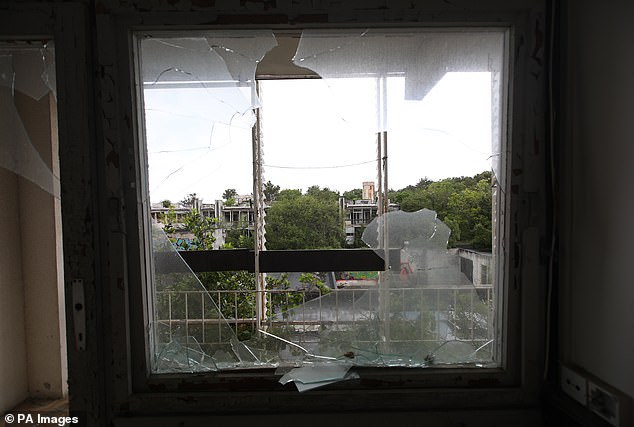
Haludovo Hotel was created and financed by porn czar Bob Guccione
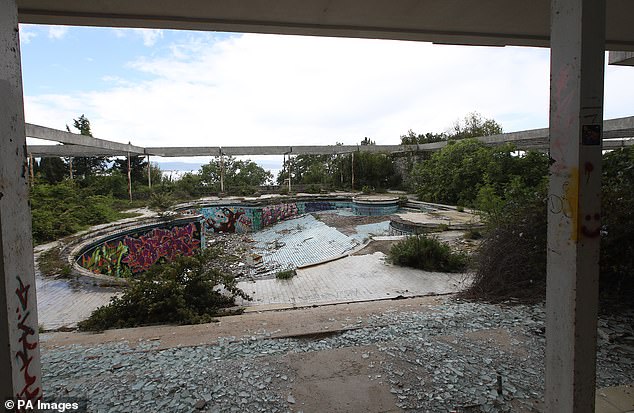
In its heyday, the opulent estate boasted 17 tennis courts, a mini football pitch and mini golf, as well as water skiing, paragliding and diving centres, several swimming pools and a bowling alley
In the 1960s, Guccione – founder of Penthouse Magazine, the first American publication to feature full nudity – dreamed of building a lavish resort in Malinska, Krk, consisting of luxury hotels and a grand casino, to bring a wealthy American clientele to the city to pull. largely ignored socialist Yugoslavia.
It seemed like a smart business decision: although the country had casinos for tourists, the people of Yugoslavia were prohibited from gambling in them. Consequently, casinos remained largely untaxed.
Guccione hoped that wealthy American tourists would go to Krk to gamble their money away at his hotel, where he could hire locals to work without any American labor laws coming into play.
In a 1972 interview with Radio Free EuropeGuccione said he believed his resort would be a “real formula in the fight against the Cold War” and claimed it would help humanize socialist Croats in the eyes of Americans and vice versa.
Guccione poured $45 million (approximately $376 million/£296 million in modern currency) into developing the property and casino (under the ownership of Croatian corporate group Brodokomerc), enlisting Boris Magaš, one of the most celebrated Croatian architects of the twentieth century, to design the complex. At the time, the hotel was strikingly modern: now architects consider it a classic example of the Brutalist style.

The Haludovo Hotel, designed by the famous Croatian architect Boris Magaš, is considered by architects as a classic example of brutalist architecture
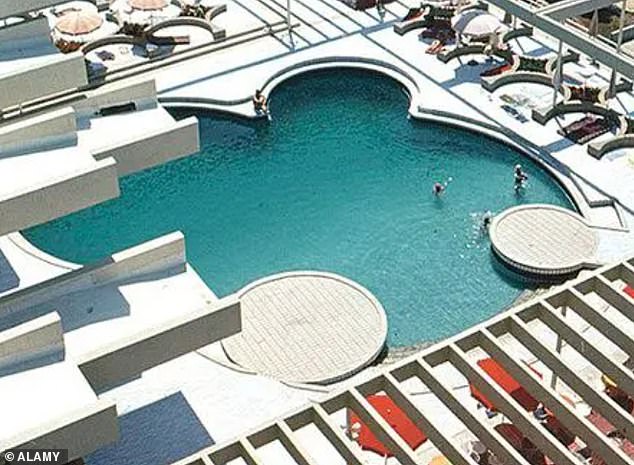
A 1972 advertisement for Haludovo in Penthouse magazine described the resort as a “mile-long Xanadu of glittering buildings (that) will become a premier playground for international celebrities.”
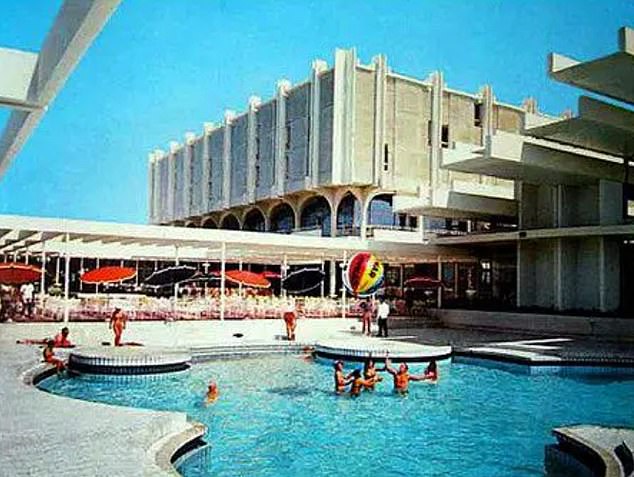
The Haludovo Hotel swimming pool in the 1970s. One story – possibly apocryphal – claims that for a particularly riotous party, the swimming pool was filled with champagne
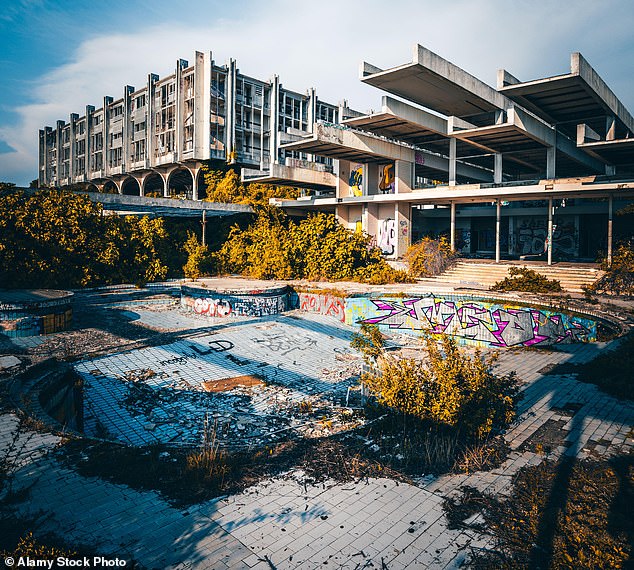
A shadow of its former glory, although it attracts curious tourists and photographers, Haludovo is quite a dangerous place
Construction took four years and the Haludovo Palace Hotel and Penthouse Adriatic Club Casino opened to great fanfare in 1972. A 1972 advertisement for Haludovo in Penthouse magazine described the resort as a “mile-long Xanadu of glittering buildings (which) will become a premier playground for international celebrities for both the summer and winter seasons.”
Every inch of the complex is designed for relaxation, fun and decadence: from glittering chandeliers to poolside cocktail service and from a bowling alley to fashionable ‘conversation pits’.
The lavish estate had 17 tennis courts, a mini football pitch and mini golf, as well as water skiing, paragliding and diving centres. One story – possibly apocryphal, but beautiful to believe – tells that one of the many pools was constantly filled with champagne.
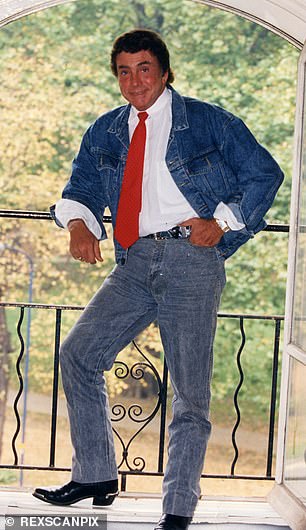
Above is Bob Guccione. A friend called Haludovo one of Guccione’s “succession of colossally ill-advised business ventures”
According to reports, during the first year, guests consumed 100 kg of lobster, 5 kg of caviar and hundreds of bottles of champagne every day. Penthouse ‘Pets’ – Guccione’s response to Hugh Hefner’s Playboy Bunnies – were flown in from the United States and tended to guests dressed in skimpy French maid dresses. Although you may assume that these ladies were used for titillation, Guccione insisted on one publication they were part of his plan for reconciliation between East and West and called them ‘the peacekeepers of the new world’.
In its heyday, the resort was a meeting place for global dictators and politicians, American weekend gamblers, the Yugoslav music scene and ordinary citizens. Saddam Hussein was one of Haludovo’s most notorious guests.
According to Croatian publication The Balkanist, on one occasion, The Butcher of Baghdad “famously left a $2,000 tip for a particularly pleasant pet.” It was also rumored that he had to postpone his flight back to Baghdad “because his son forgot a gold pistol under a pillow in his suite.”
What Haludovo didn’t do, however, is make money: in 1973 it declared bankruptcy due to its extravagant operating costs, although it managed to stay open for the next twenty years (Guccione was bleeding money into the property, part of what a friend called ‘A succession of colossally ill-advised business ventures‘) until 1991, when Yugoslavia was ravaged by civil war.
What was once a haven for the glitterati became a literal refuge: Families displaced by the war were housed in the now decommissioned hotel for the duration of the war. Dismayed when they were unceremoniously evicted at the end of the war, many refugees robbed Haludovo of every conceivable valuable item: pipes, radiators, copper wiring and electrical sockets.
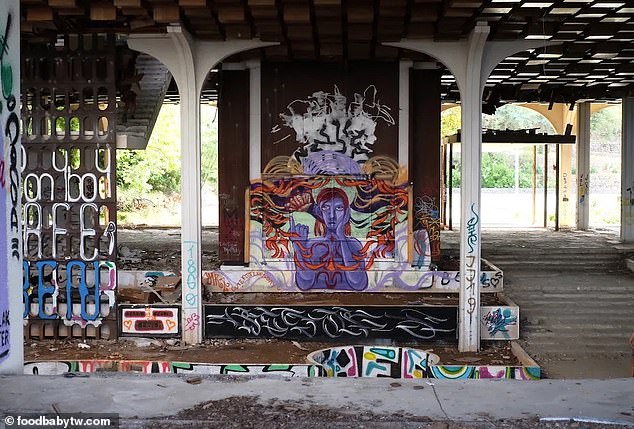
Strangely beautiful: extensive graffiti in the entrance of the former Haludovo Hotel. Image credit: Food baby
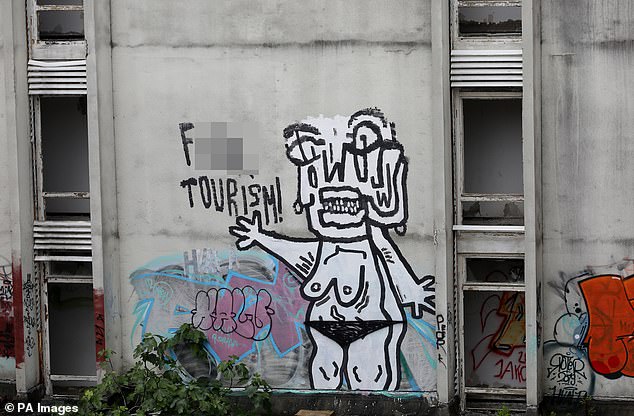
The hotel was converted in the 1990s into a refuge for people who lost their homes during the Yugoslav Wars
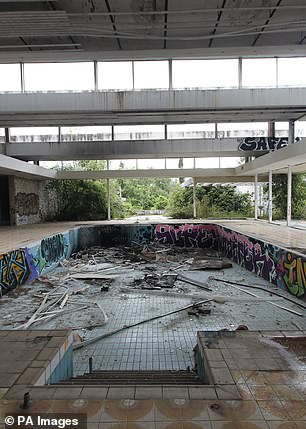
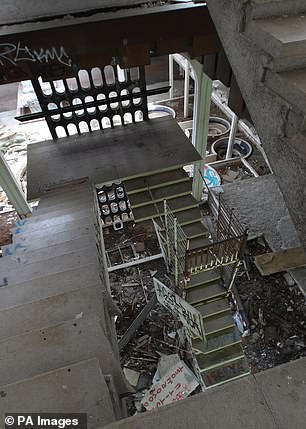
In its heyday, the resort was a meeting place for global dictators and politicians, American weekend gamblers, the Yugoslav music scene and ordinary citizens. Saddam Hussein was one of Haludovo’s most notorious guests
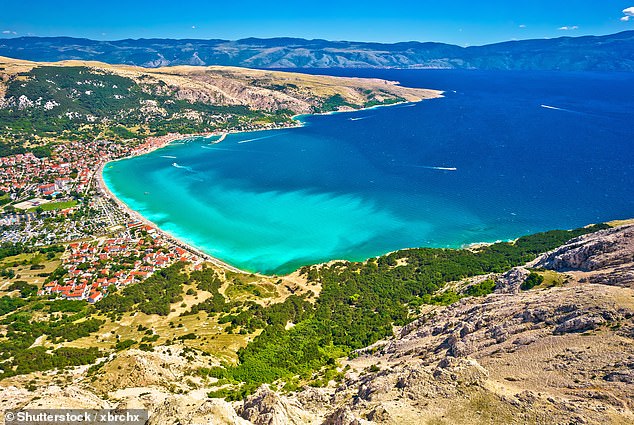
The sun-drenched island of Krk. A bridge connects the Adriatic site with the mainland
In 1995, the hotel was privatized, after which the investor divided the huge estate into pieces and sold it bit by bit, piece by piece. Although parts of the hotel reopened to guests, it never regained its former opulent patina and clientele. The last recorded guests visited in 2002.
Since then it has fallen further into disrepair. Although a shadow of its former glory, it attracts curious tourists and photographers, but this defunct pleasure palace is quite a dangerous place.
The Balkanist said, “Piles of broken glass cover the floor. Large pieces of the concrete stairs have broken off and fallen to the ground. Floors buckle. The skylights are all shattered, leaving bits of jagged window floating above their heads.
‘A long trail of blood leads up two flights of stairs to the top floor. And then there are the disturbing tags, probably written by high school students but still disturbing: ‘DIE HELP ME HELP ME’ and Saxa loquuntur, which is Latin for ‘the stones are talking.’
